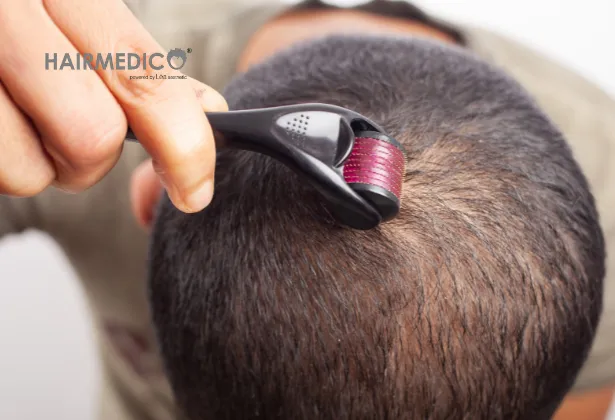
Hair loss affects millions of people worldwide, impacting confidence and quality of life. Fortunately, 2025 offers a wide range of scientifically supported products designed to regrow hair, especially for those dealing with pattern baldness or thinning hair. In this guide, Hairmedico examines the best over-the-counter and prescription options available today, explaining how they work and how to incorporate them into a successful hair regrowth routine.
Baldness, especially androgenetic alopecia (male or female pattern baldness), is primarily genetic and hormonal. Other causes include stress, nutritional deficiencies, scalp conditions, or medical treatments like chemotherapy. Effective treatment starts with understanding the underlying cause of hair loss.
Minoxidil remains one of the most trusted FDA-approved treatments for hair loss. Available in 2% and 5% concentrations, it stimulates blood flow to the hair follicles, prolonging the growth phase and encouraging regrowth. It’s commonly used for both men and women and is widely available.
Finasteride is a prescription-only oral medication that works by inhibiting the hormone DHT, which shrinks hair follicles. It is highly effective in men but not typically recommended for women.
Serums containing biomimetic peptides, caffeine, or growth factors can improve scalp health and stimulate follicle activity. These products are typically used daily and complement medical treatments.
Devices like laser combs, caps, and helmets use red light to stimulate hair follicles and promote regrowth. Studies support LLLT as a non-invasive, painless, and safe method to treat hair loss.
Supplements containing biotin, zinc, vitamin D, and collagen support overall hair health. Though not a standalone cure, they enhance results when combined with other treatments.
Caffeine-infused or ketoconazole-based shampoos help reduce scalp inflammation and support follicle health. While not regrowth treatments per se, they create a healthier scalp environment.
Folliactiv offers a specialized range of products designed to combat hair loss and support post-hair transplant care. Their product line includes:
Shampoo: Gently cleanses the hair and scalp to create a healthy environment conducive to hair growth.
Serum: Formulated to stop hair loss and promote fuller hair.
Lotions and Supplements: Tailored for newly transplanted hair, these products support healing, promote hair growth, and maintain scalp health, enhancing the success and longevity of hair transplant results.
These products can be an excellent complement to medical treatments and provide support during the post-operative phase for hair transplant patients.
Some natural options have shown moderate success:
Saw Palmetto: A plant-based DHT blocker.
Pumpkin Seed Oil: May help reduce hair loss.
Rosemary Oil: Some studies suggest it performs comparably to minoxidil.
Always consult a medical professional before relying solely on natural remedies.
Consult a Specialist: Start with a diagnosis to understand the root cause.
Choose the Right Treatment: Based on gender, hair type, and type of baldness.
Stay Consistent: Most products require daily use over 3–6 months to show results.
Combine Approaches: Many patients benefit from a combined routine (e.g., Minoxidil + Supplements + LLLT).
Track Progress: Take monthly photos to evaluate regrowth.
If over-the-counter and prescription treatments don’t provide satisfactory results, medical options like PRP (Platelet-Rich Plasma) therapy or hair transplant procedures can be explored. These procedures are effective for advanced hair loss and offer long-lasting outcomes.
There is no one-size-fits-all solution for baldness, but 2025 offers more scientifically proven, accessible options than ever before. By understanding the products that truly work and how to use them, you can begin your journey toward fuller, healthier hair. Hairmedico is here to support you every step of the way.
For more information about surgical and non-surgical hair restoration, visit our Hairmedico guide.